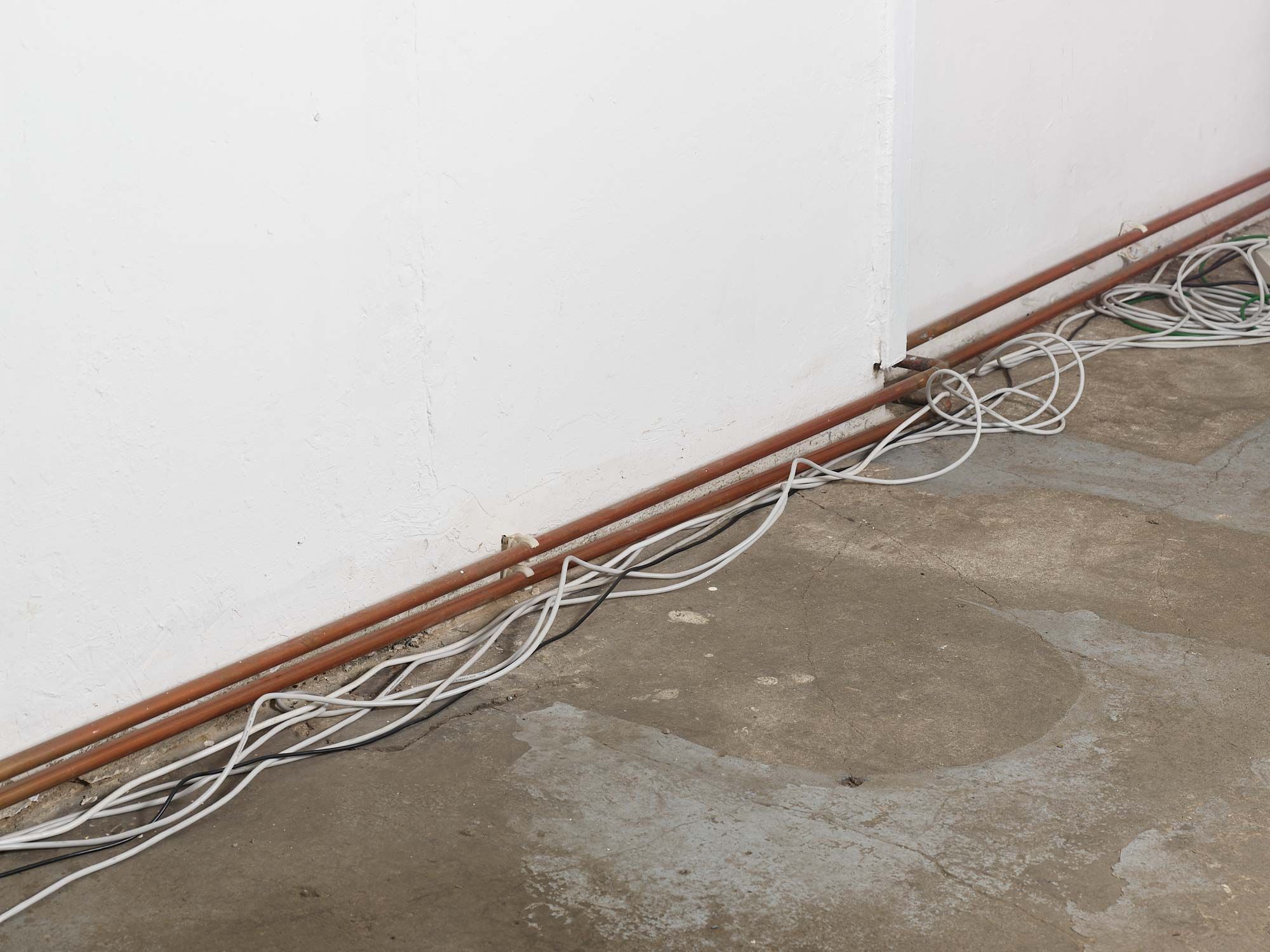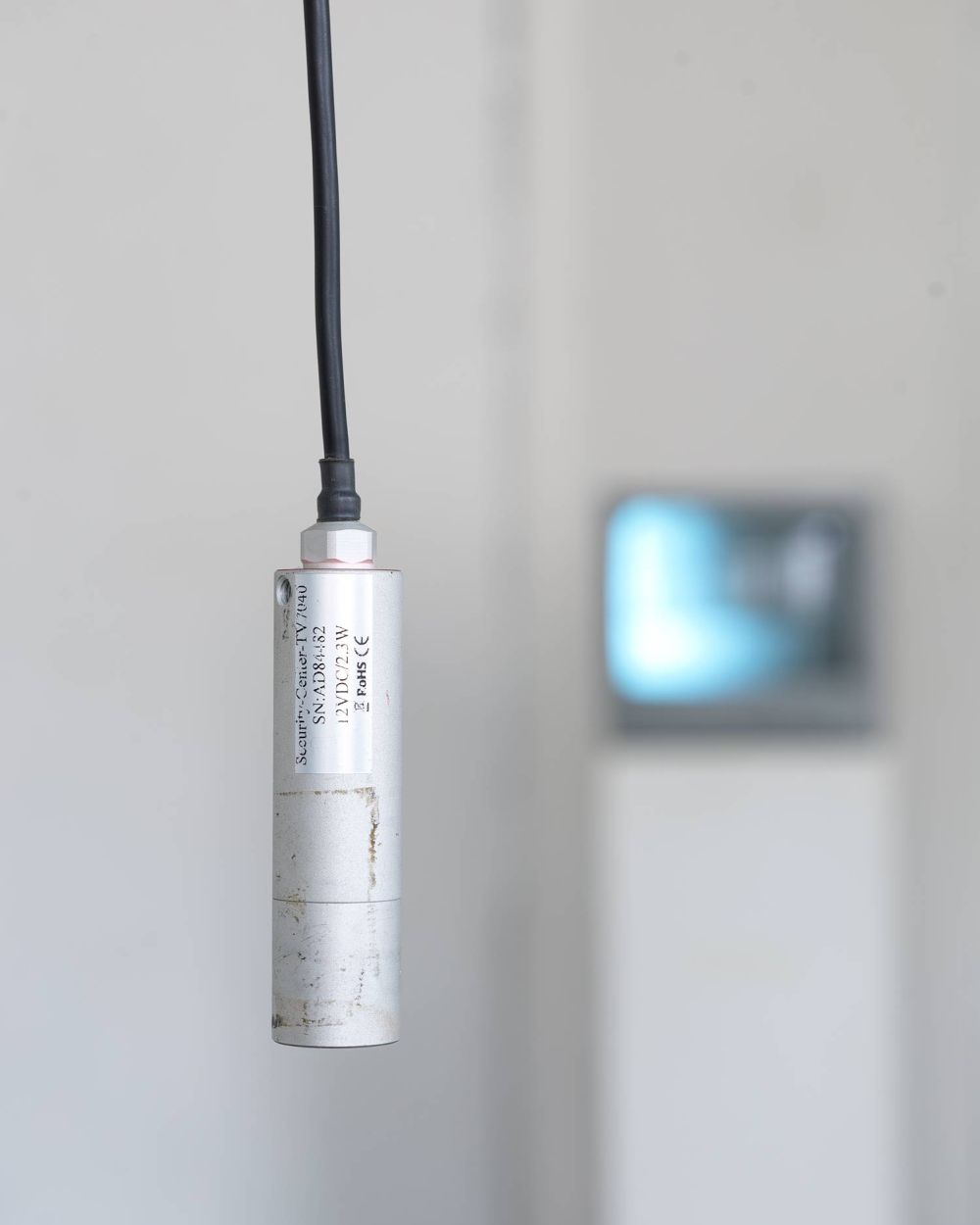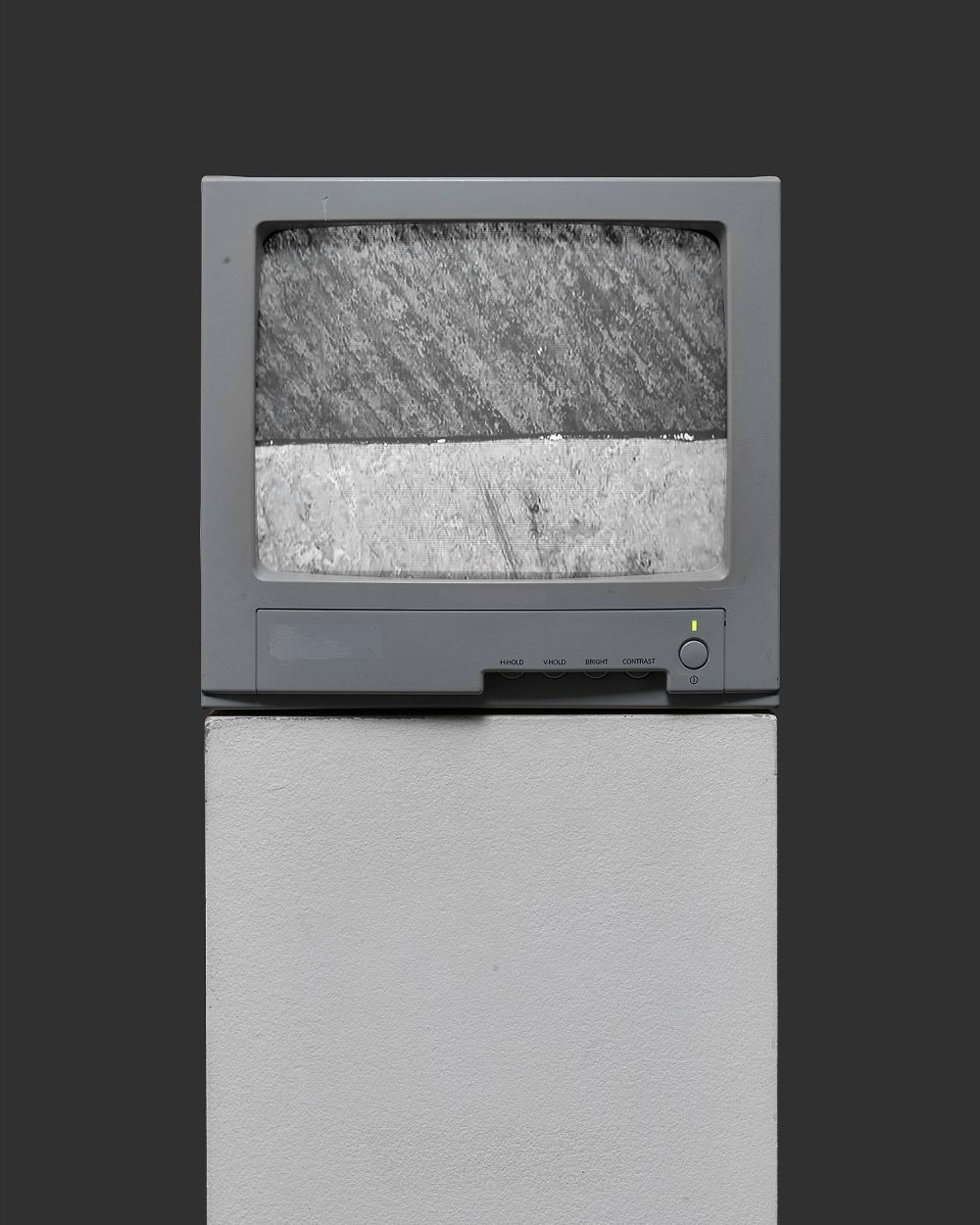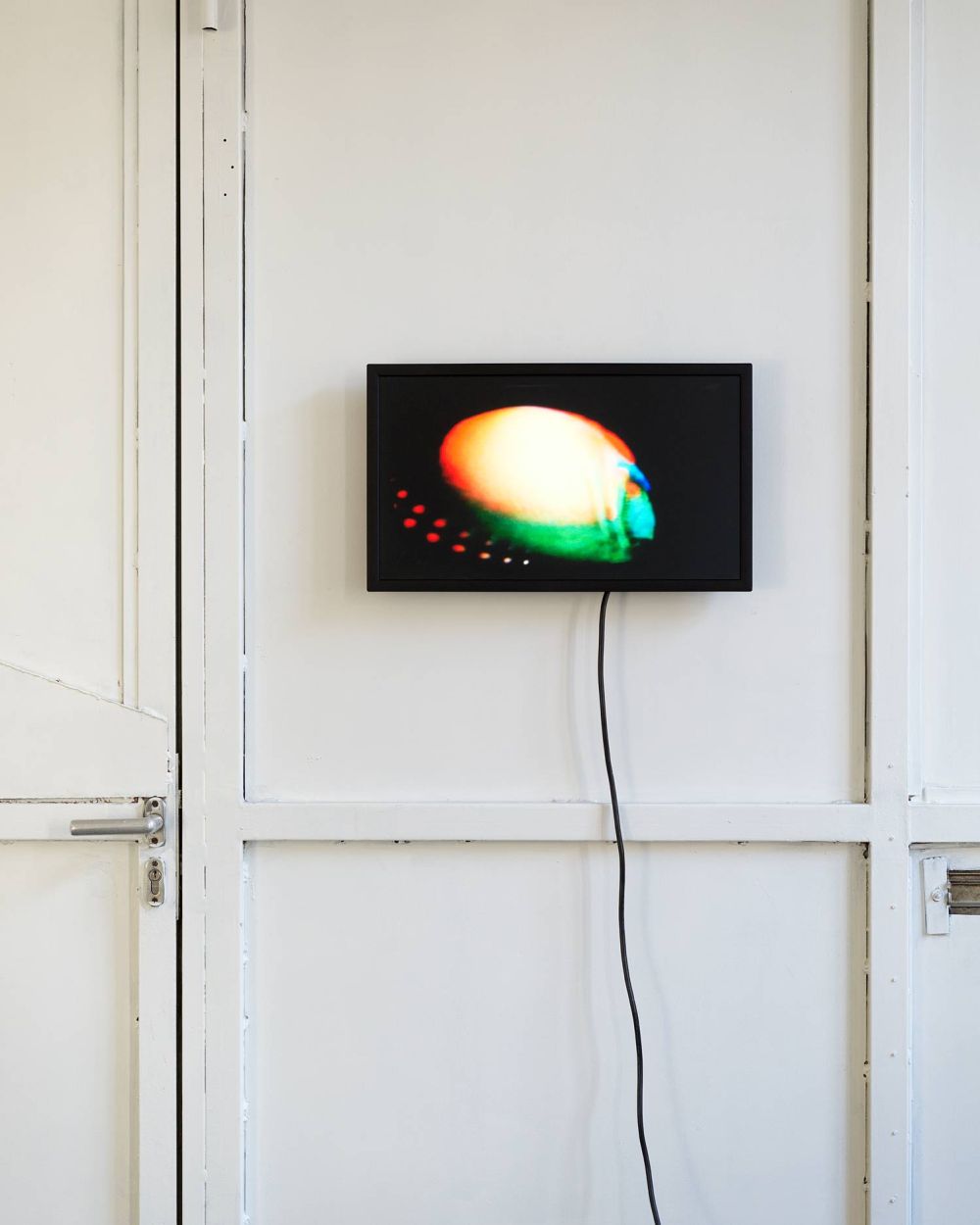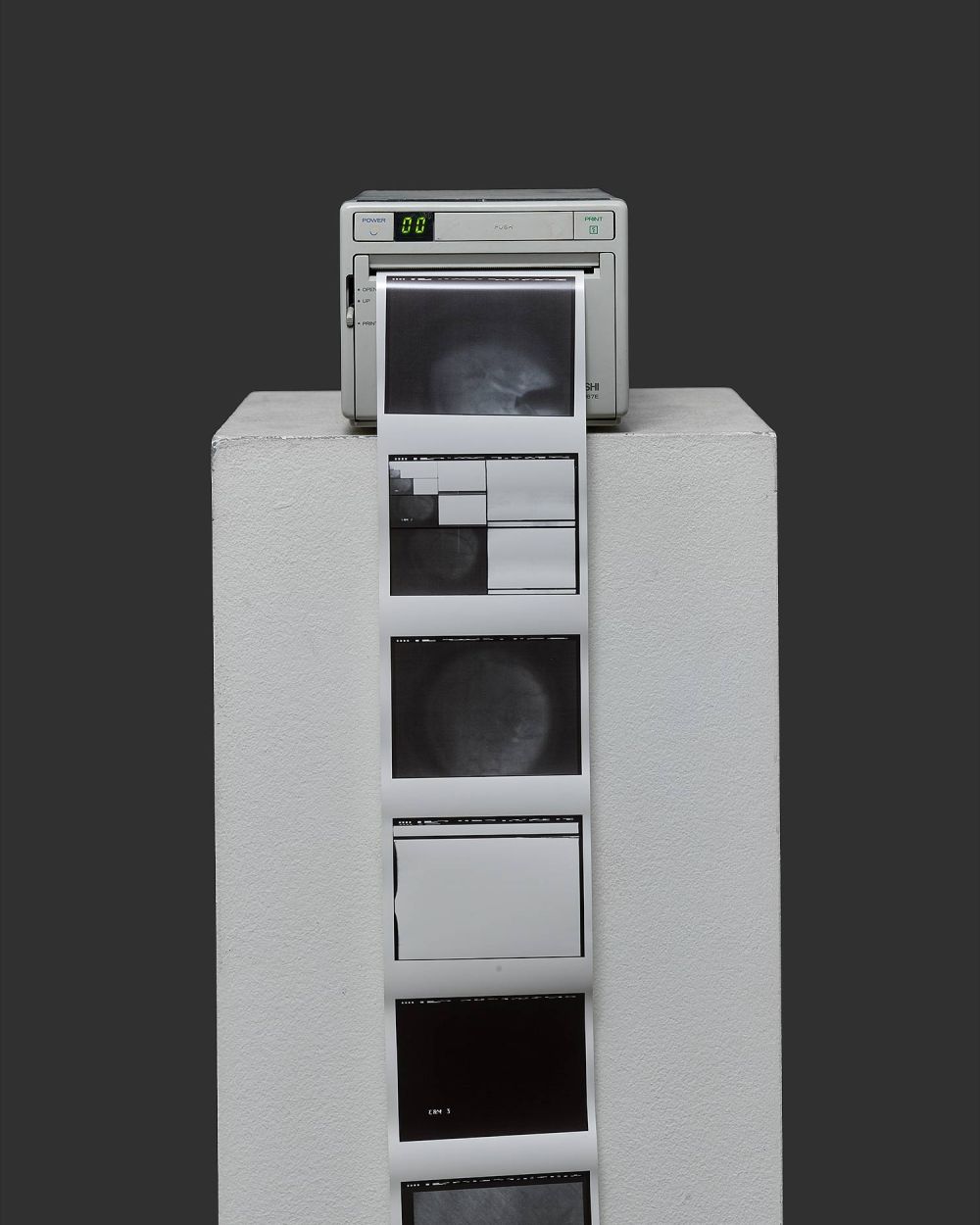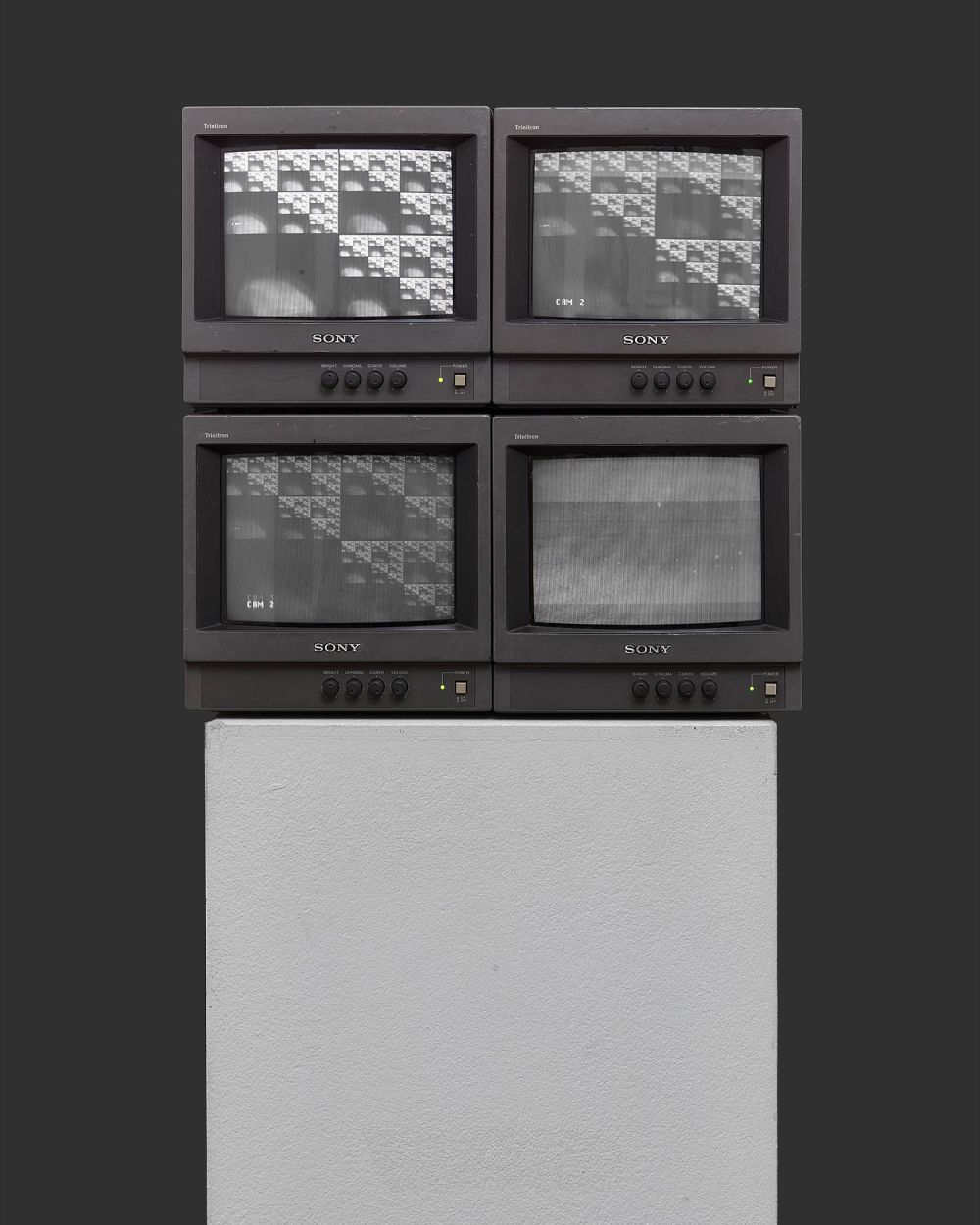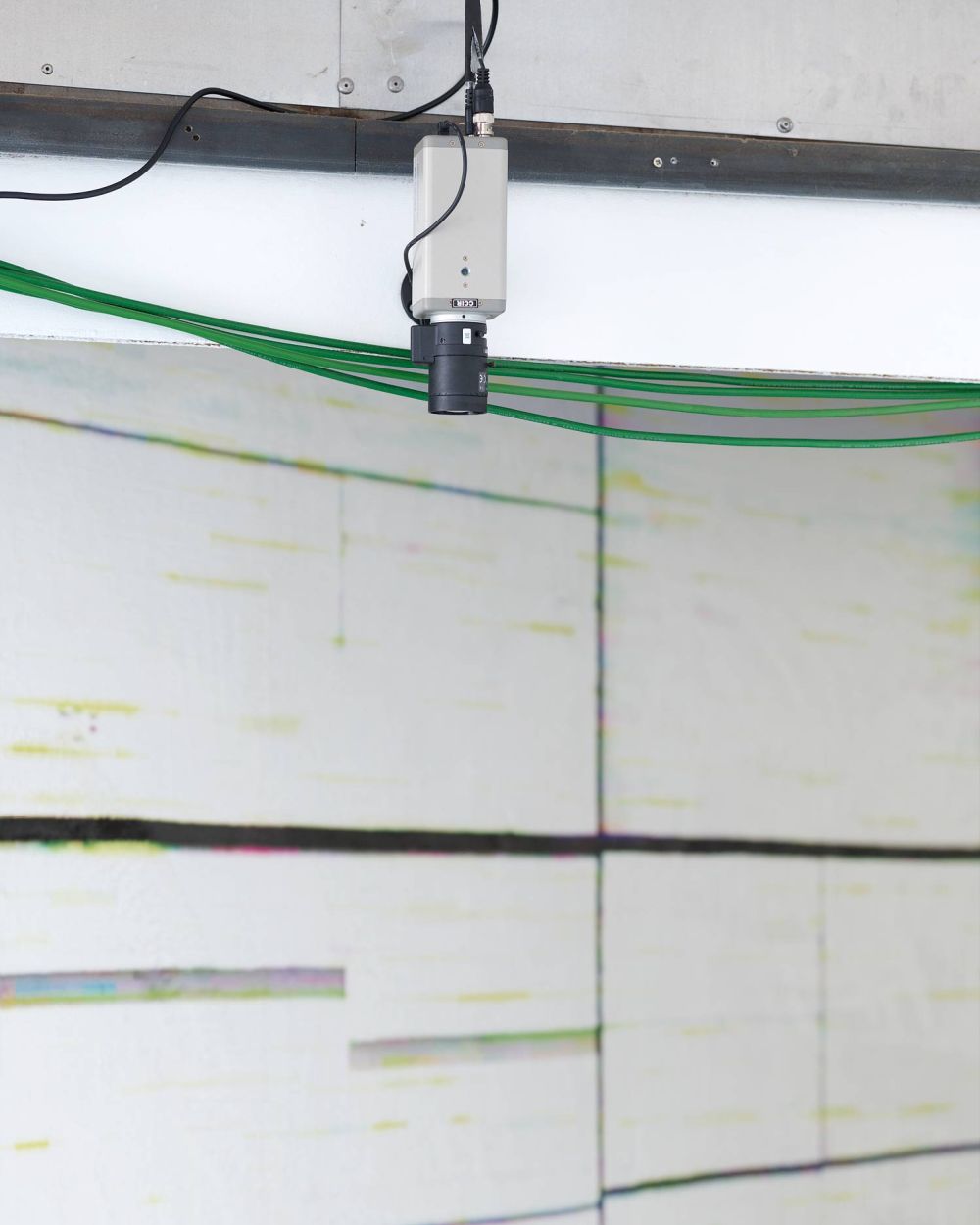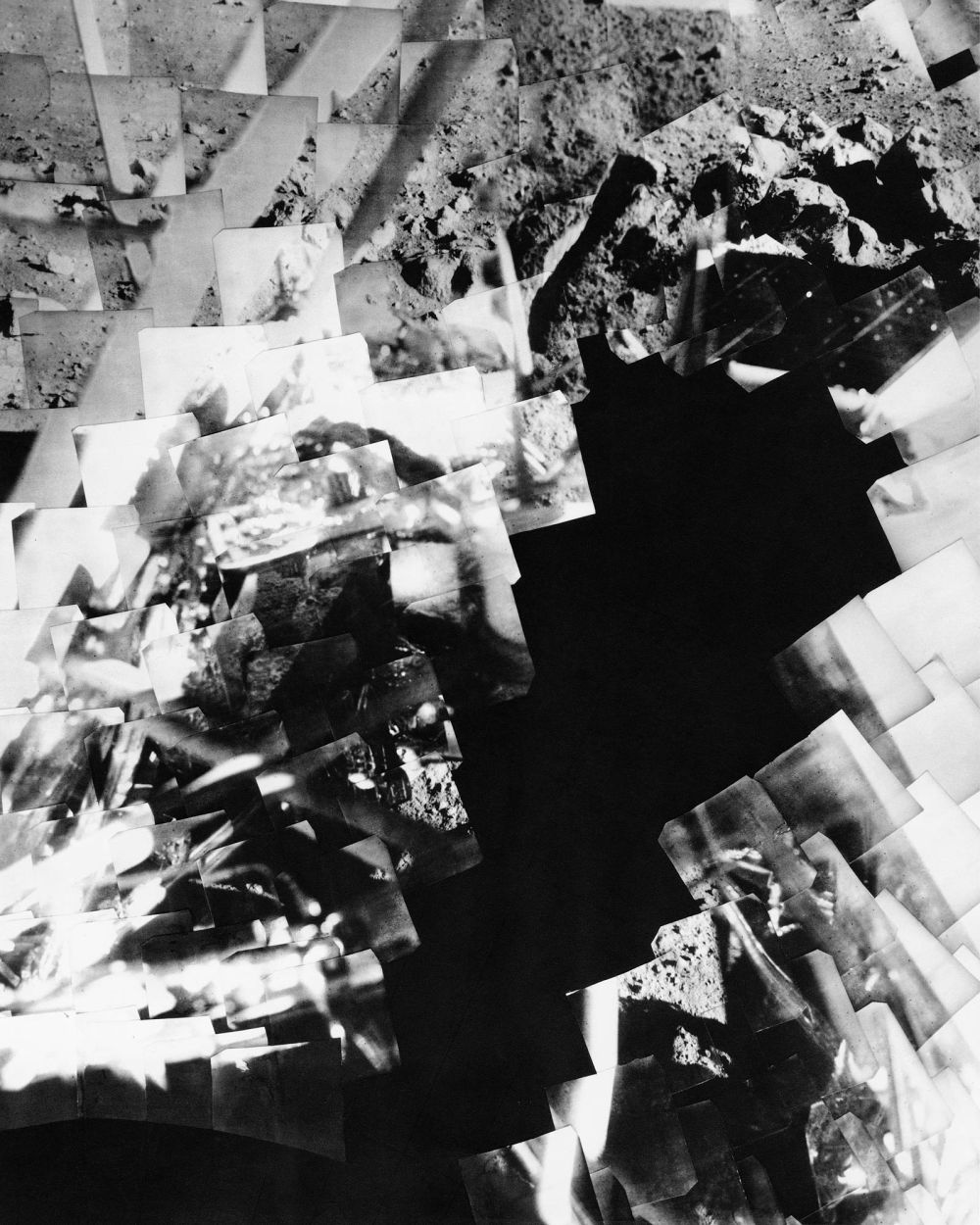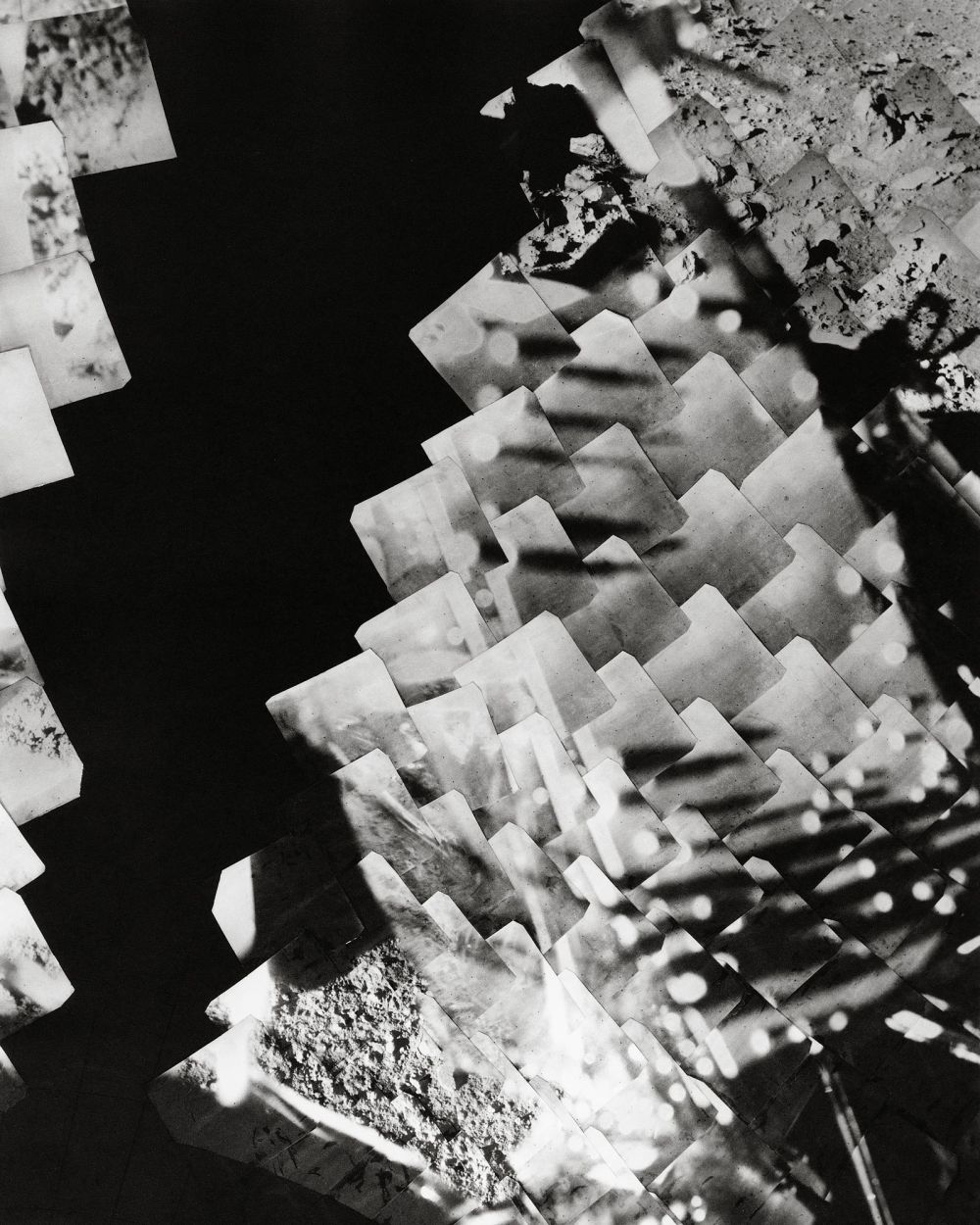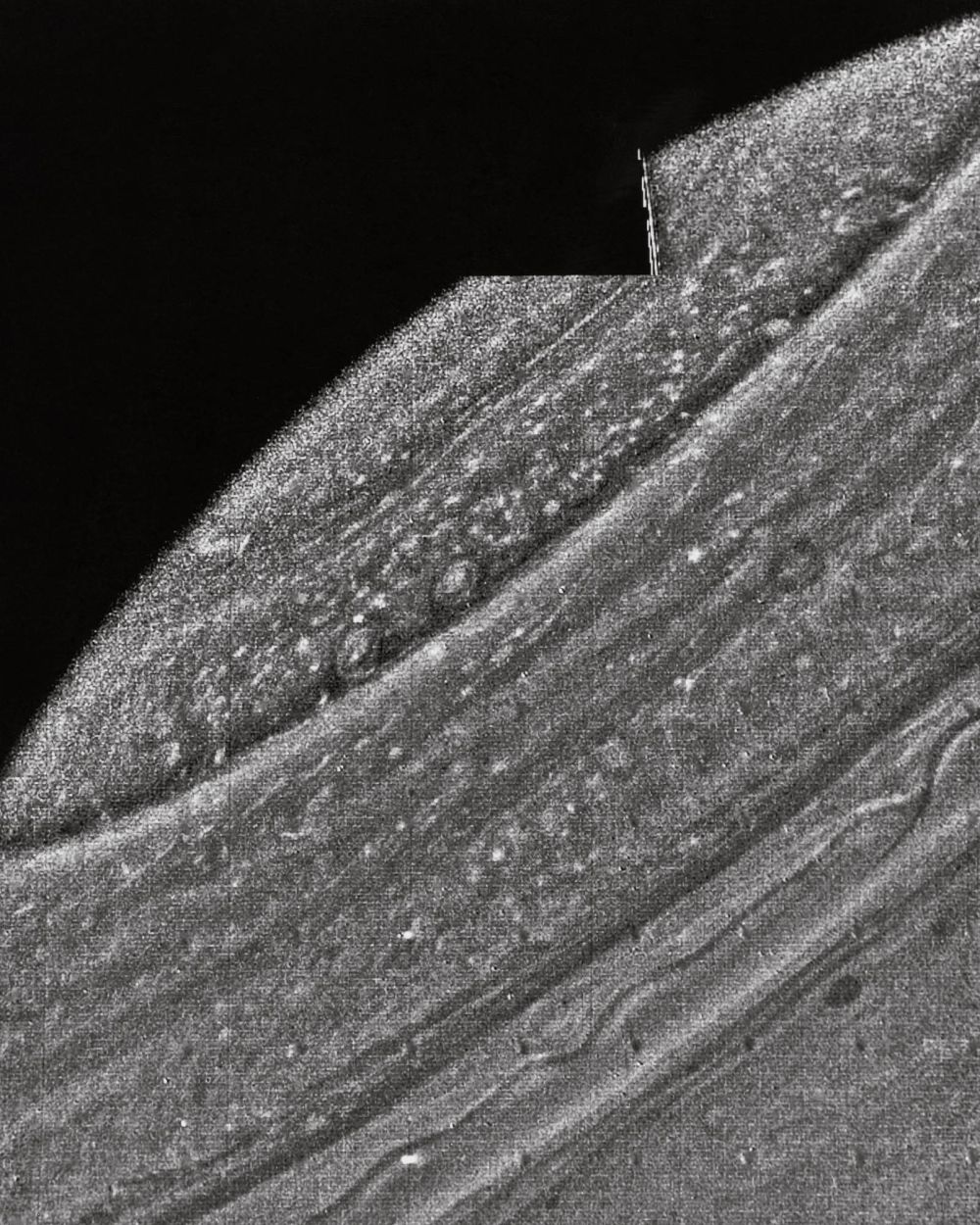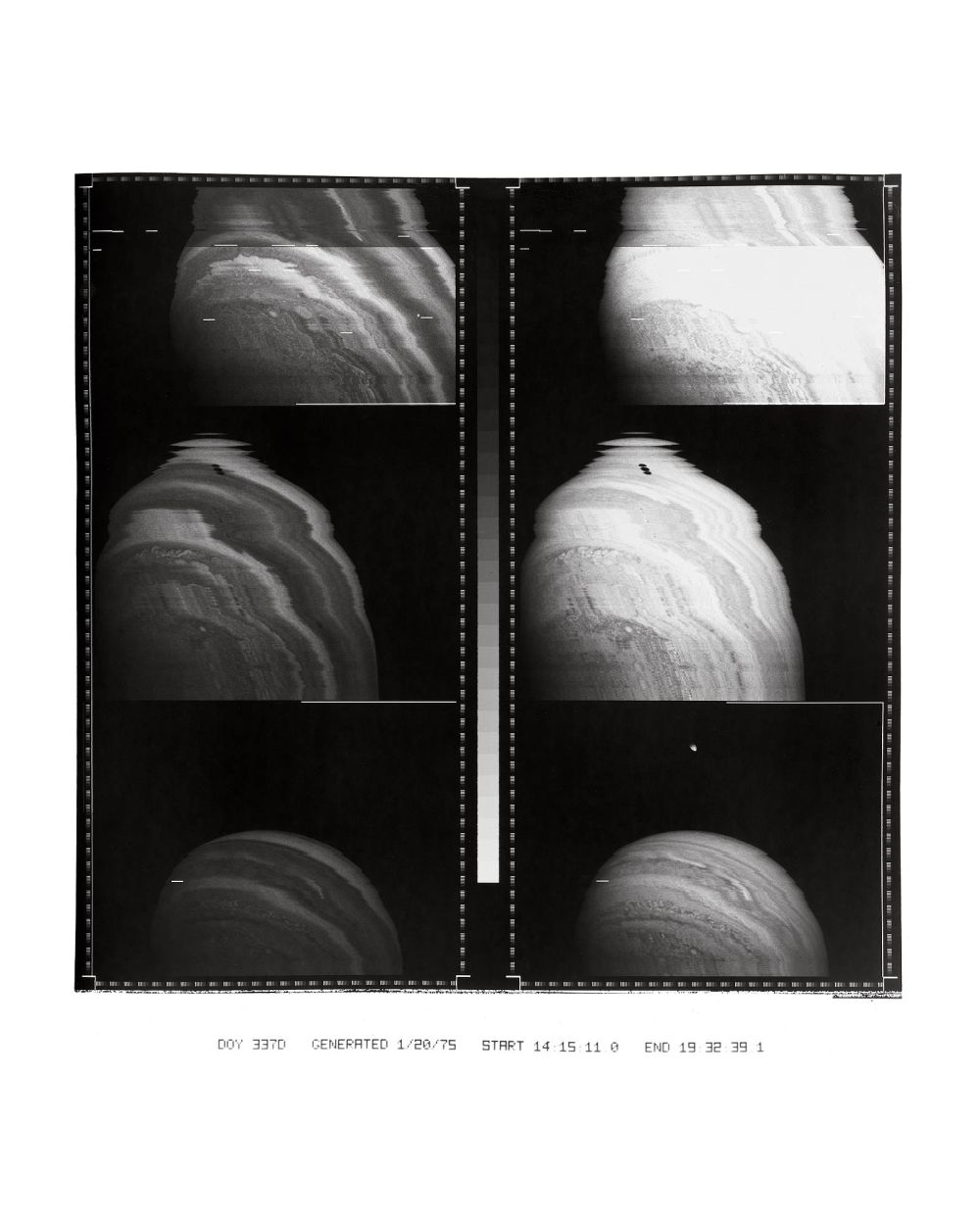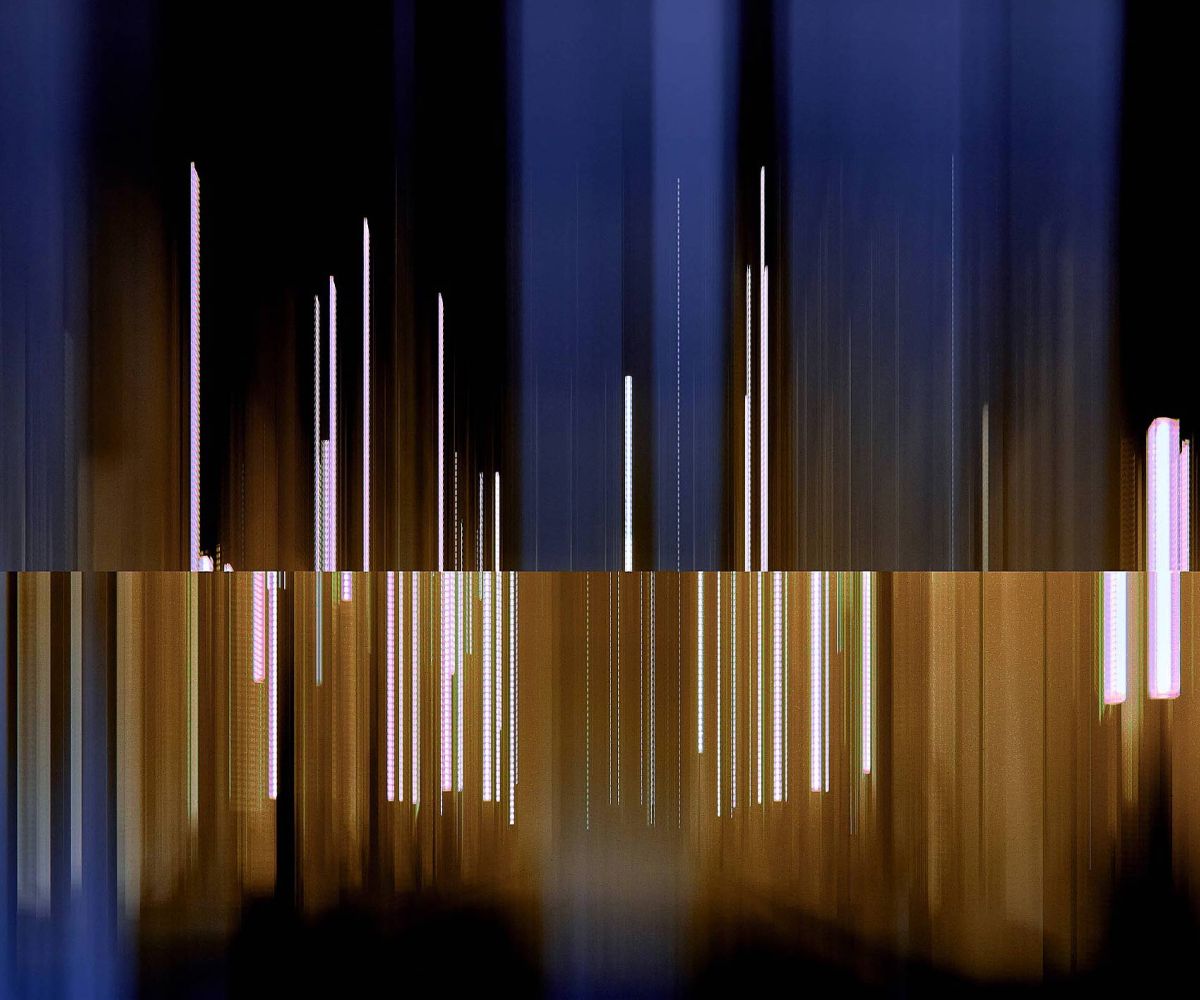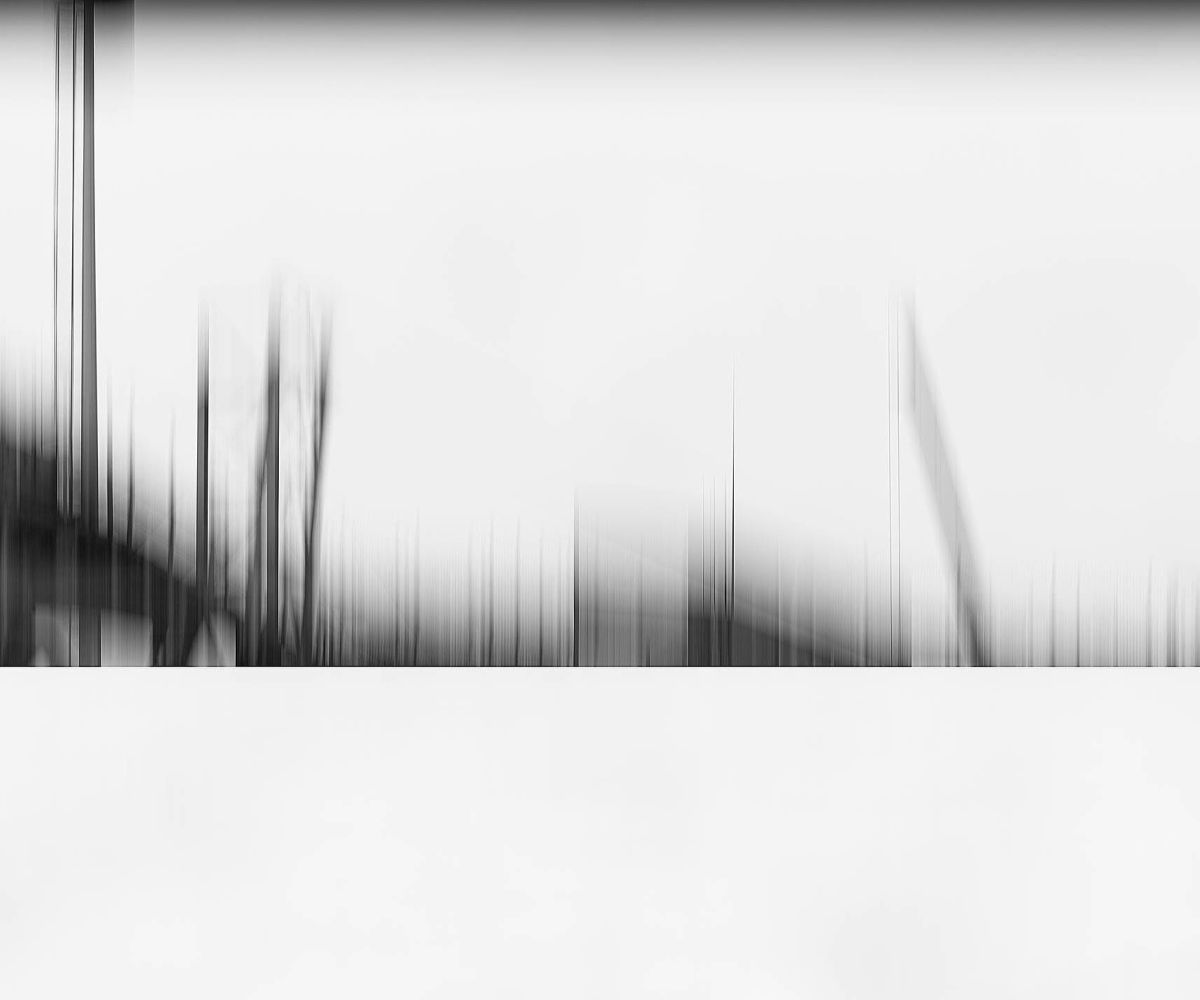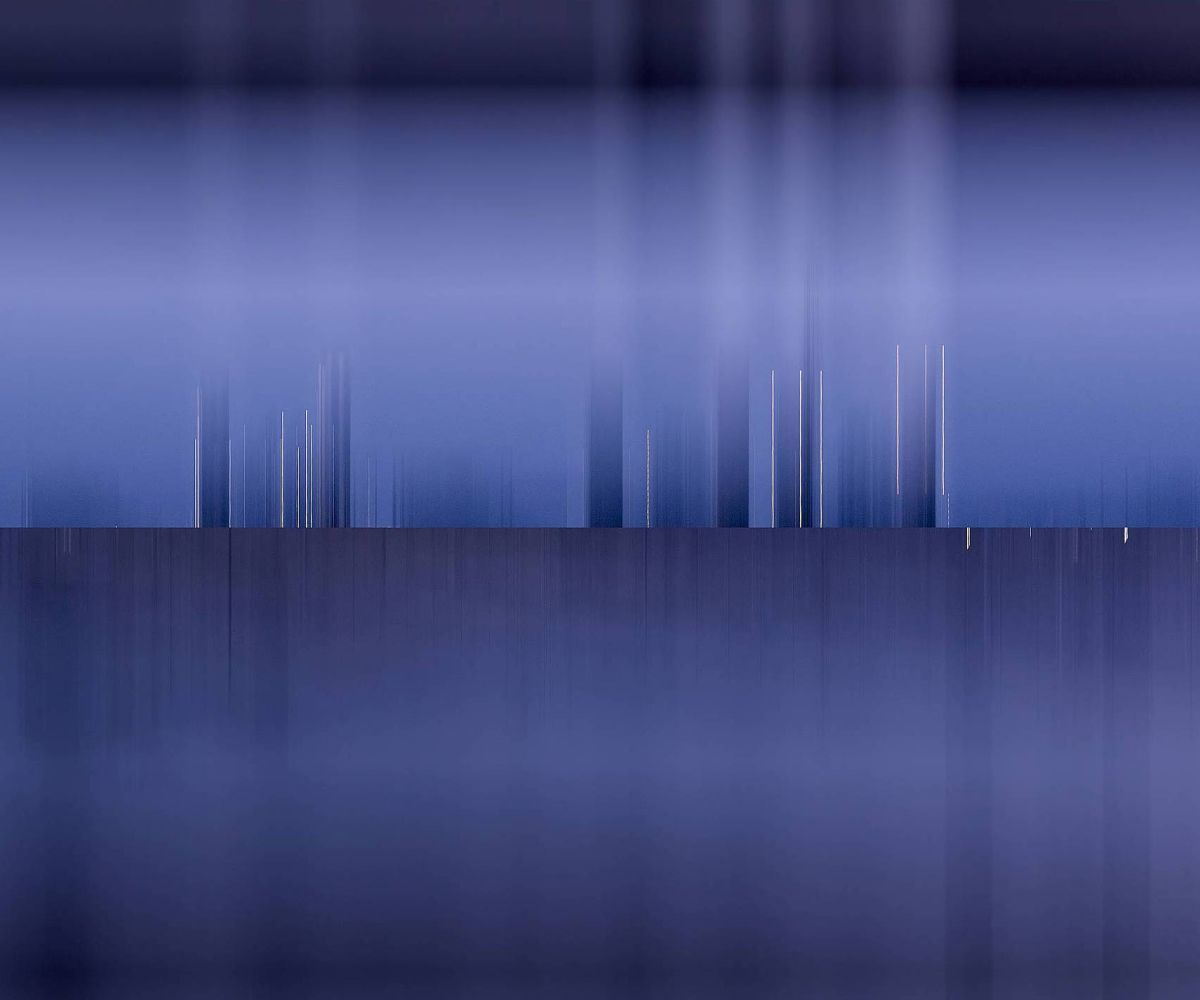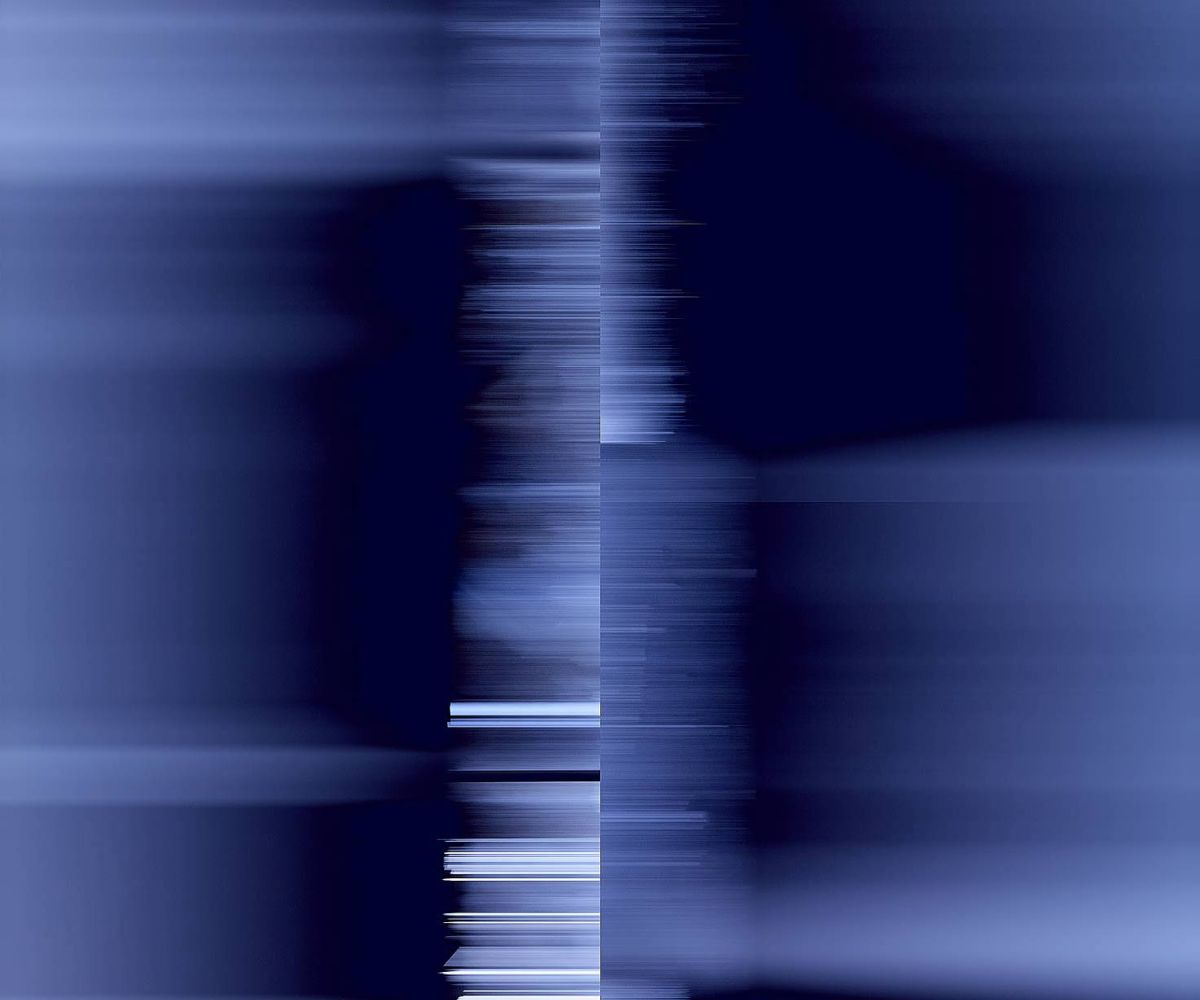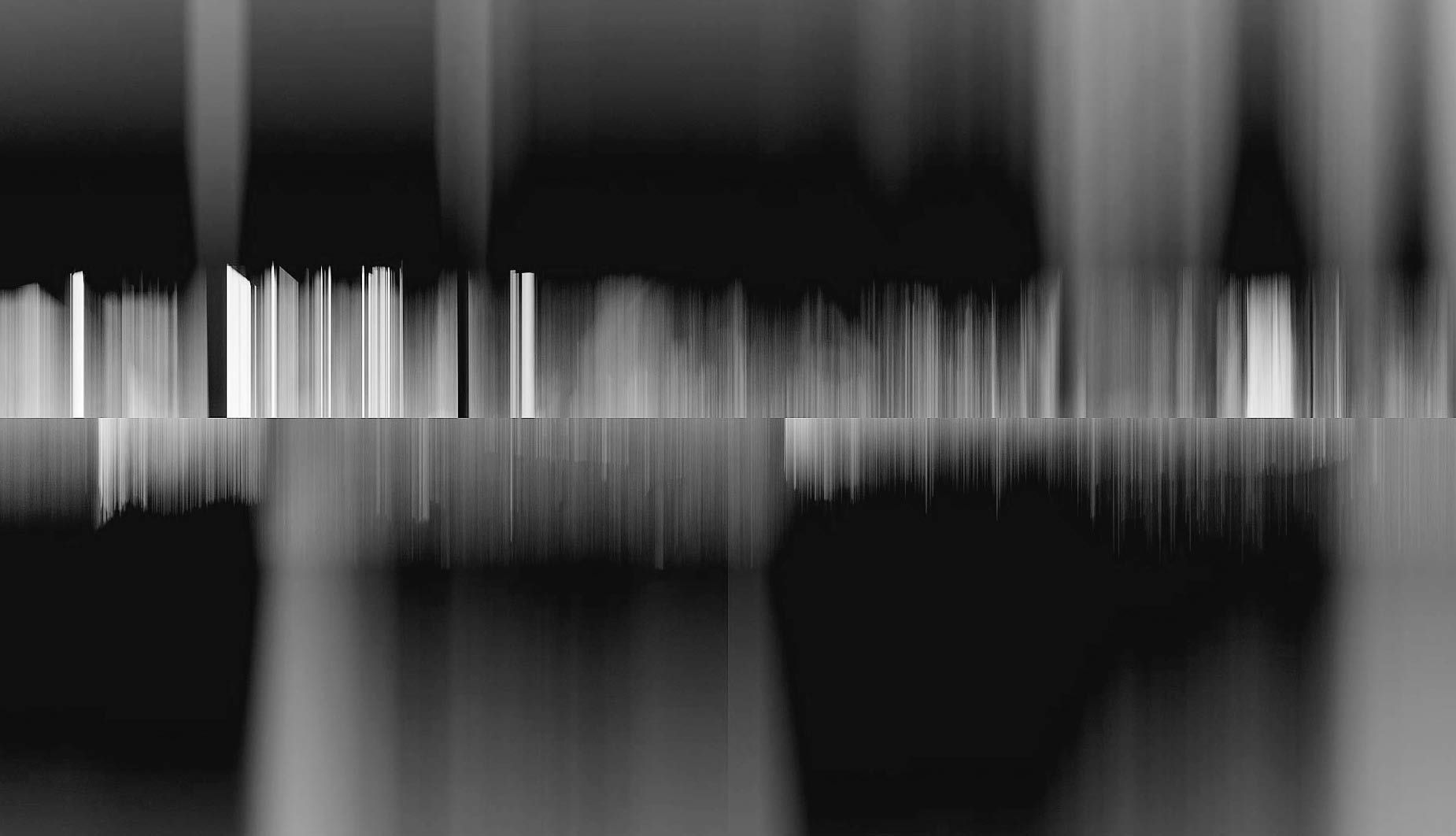
STRANGEPLACE Unbestimmtheitsstellen
Exploration of the Approximate
Exhibition project exploring questions of perspective and the construction of reality through technology and context, image and movement.
A dialogical encounter amidst rampant hyperreality, between space exploration archives and spatial perception,
error and case study, vast noise and closed circuit.
Felix Pausch: Installation
Peter Voigt : Photography
Felix Pausch • Installation
Frankfurt‐based sociologist, artist, and exhibition manager. Works in visual arts with an emphasis on installation, closed‐circuit, video, and occasionally performative intersections of audio, video, and performance. Formerly active at SIKS‐Frankfurt, HoRsT‐Gallus, and in extremism research; currently at ZKM Karlsruhe.
Peter Voigt • Photography
Peter Voigt’s works in Unbestimmtheitsstellen trace a historic and artistic line from the early days of analog electronic photography to contemporary digital image capture. His photographs build on transmission errors and image faults first encountered in the space photography of the 1960s and 1970s, particularly in NASA's Surveyor, Viking and Voyager missions. These early glitches — caused by unstable electronic signals and mechanical imperfections — become the starting point for a dialogue with today's synchronization and black balance errors found in high-resolution digital backs.
Voigt deliberately works with the technical margins of imaging devices, transforming unintended faults into visual phenomena that question perception and reality. Using both original NASA images and his own contemporary photography, he reveals a continuity of fragility in technological vision, despite decades of development. In Unbestimmtheitsstellen, data loss, signal noise, and synchronization failures are no longer mere mistakes — they become markers of a broader uncertainty, a reminder that even the most advanced imaging technologies remain bound to error, context, and interpretation.
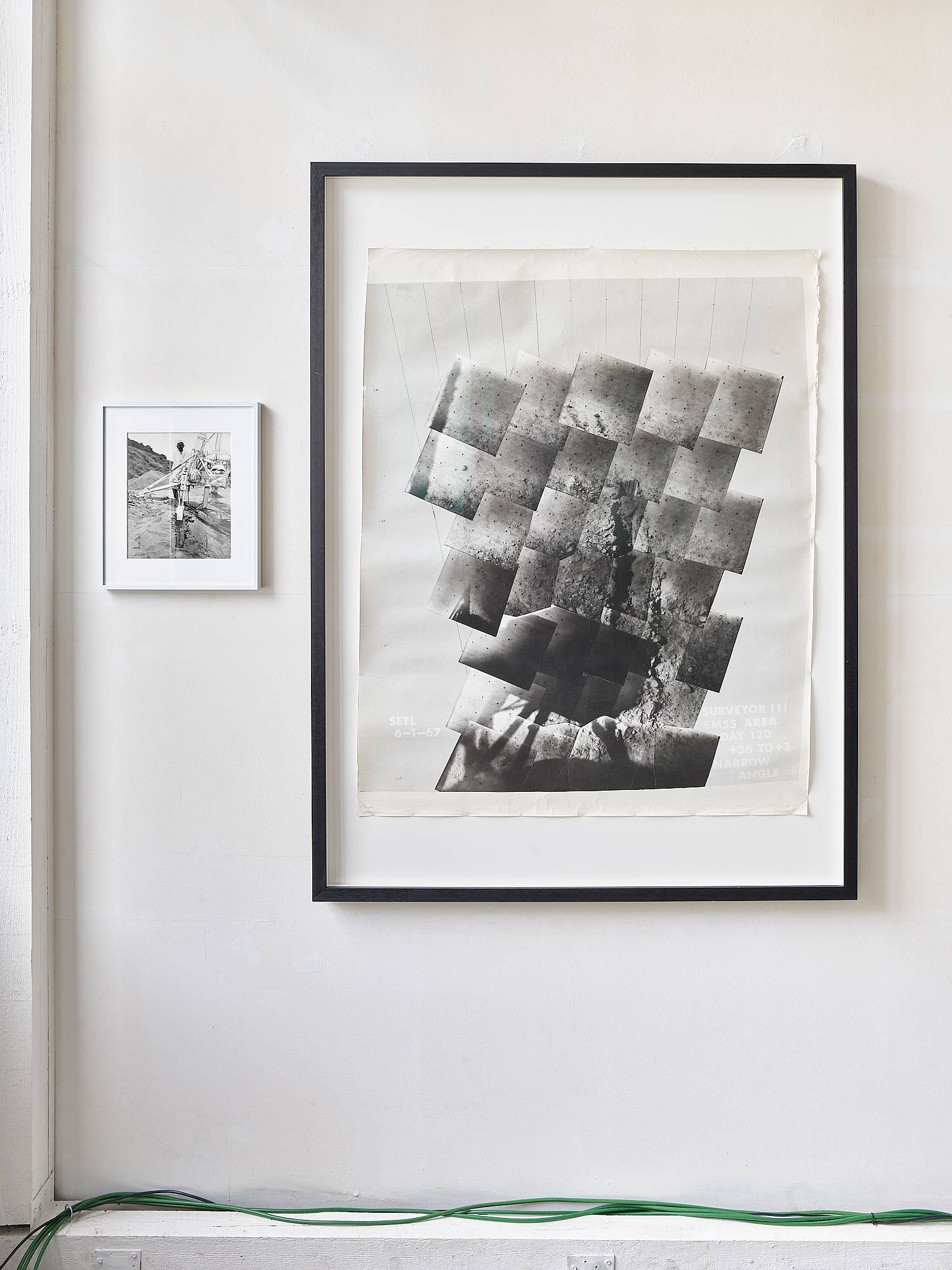
Analog electronic photography
Early space missions used analog electronic imaging systems with Vidicon tubes to capture still photographs. These cameras scanned scenes line by line, converting visual data into analog signals for transmission. Image quality was limited by tube sensitivity and the instability of analog transmission, often resulting in noise, distortions, and missing data.
While the image capture itself remained analog, later missions began using digital transmission methods, improving reliability and clarity. Analog imaging systems were also used in scientific, industrial, and surveillance contexts, but remained niche due to their cost and complexity. Today, their characteristic flaws have become part of the visual legacy of early machine vision.
Surveyor 3 mosaic
Original vintage NASA photograph
Silver gelatin print
80 x 105 cm
printed in 1966
Strangelove Collection (provenance: Enrique Garcia, NASA).
Surveyor 6
Limited edition created from a restored original photograph from the Strangelove collection.
24 x 30 cm.
Canson Baryta Photographique Matt
Halbe Distanzrahmen mit Museumsglas, schwarz
Edition of 10
Surveyor 6
Limited edition created from a restored original photograph from the Strangelove collection.
24 x 30 cm
Canson Baryta Photographique Matt
Halbe Distanzrahmen mit Museumsglas, schwarz
Edition of 10
Surveyor 6
Limited edition created from a restored original photograph from the Strangelove collection.
24 x 30 cm
Canson Baryta Photographique Matt
Halbe Distanzrahmen mit Museumsglas, schwarz
Edition of 10
Voyager 1
Limited edition created from a restored original photograph from the Strangelove collection.
28 x 35 cm
Canson Baryta Photographique Matt
Halbe Distanzrahmen mit Museumsglas, weiss
Edition of 8
Voyager 2
Limited edition created from a restored original photograph from the Strangelove collection.
28 x 35 cm
Canson Baryta Photographique Matt
Halbe Distanzrahmen mit Museumsglas, weiss
Edition of 8
Voyager 2
Limited edition created from a restored original photograph from the Strangelove collection.
28 x 35 cm
Canson Baryta Photographique Matt
Halbe Distanzrahmen mit Museumsglas, weiss
Edition of 8
Voyager 1
Limited edition created from a restored original photograph from the Strangelove collection.
28 x 35 cm
Canson Baryta Photographique Matt
Halbe Distanzrahmen mit Museumsglas, schwarz
Edition of 8
Pioneer 11
Limited edition created from a restored original photograph from the Strangelove collection.
28 x 35 cm
Canson Baryta Photographique Matt
Halbe Distanzrahmen mit Museumsglas, weiss
Edition of 8
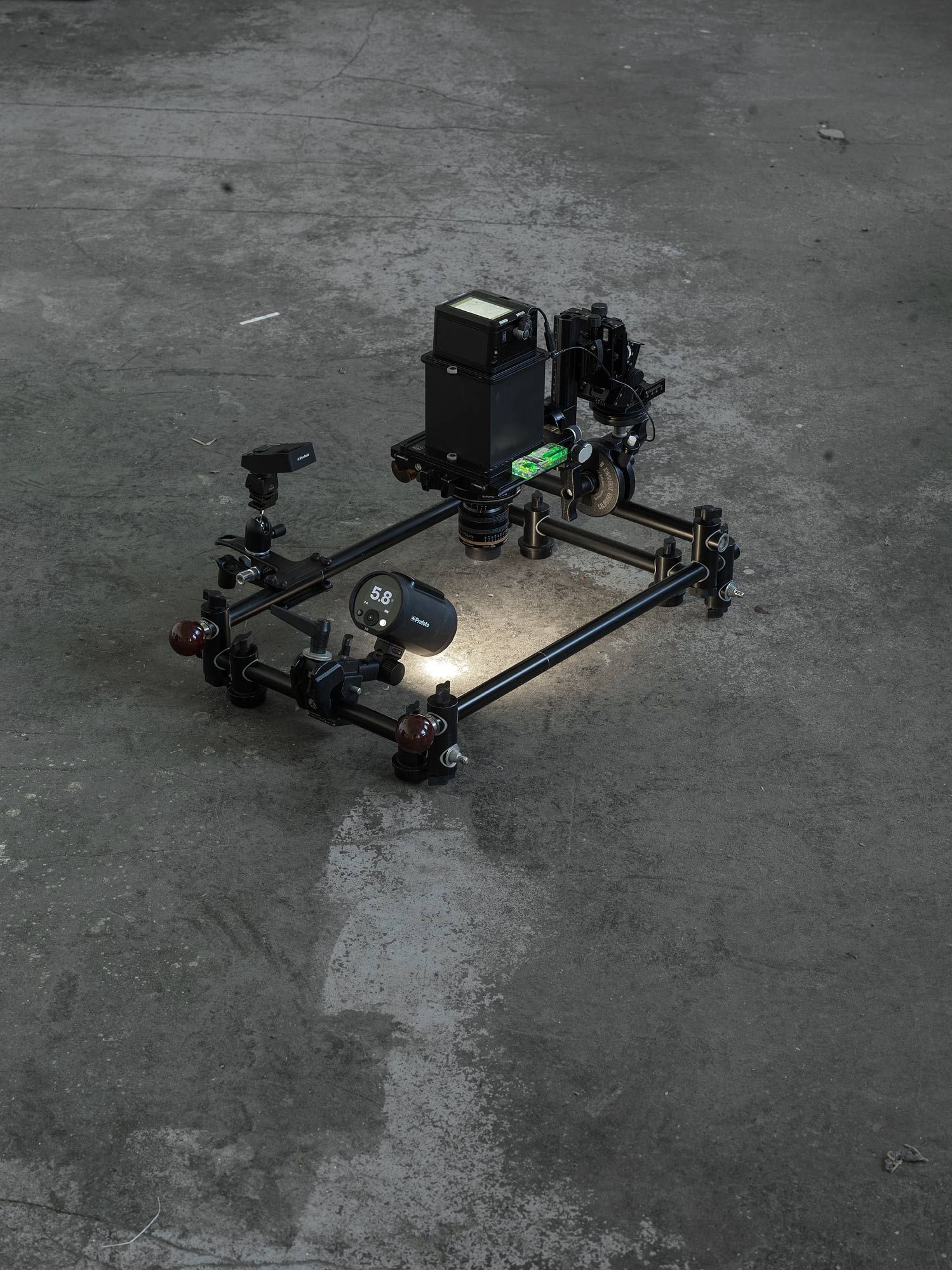
Strange Surveyor 1
As part of the exhibition, we documented the floor of our exhibition space using a super high-resolution camera system, which we humorously named Strange Surveyor 1. The resulting series, titled Groundwork, mimics the early space mosaic photographs of missions like Surveyor. Individual images were stitched together into large-scale compositions; the original files reach dimensions of up to eight meters in height. For practical reasons, the prints were produced at a reduced size.
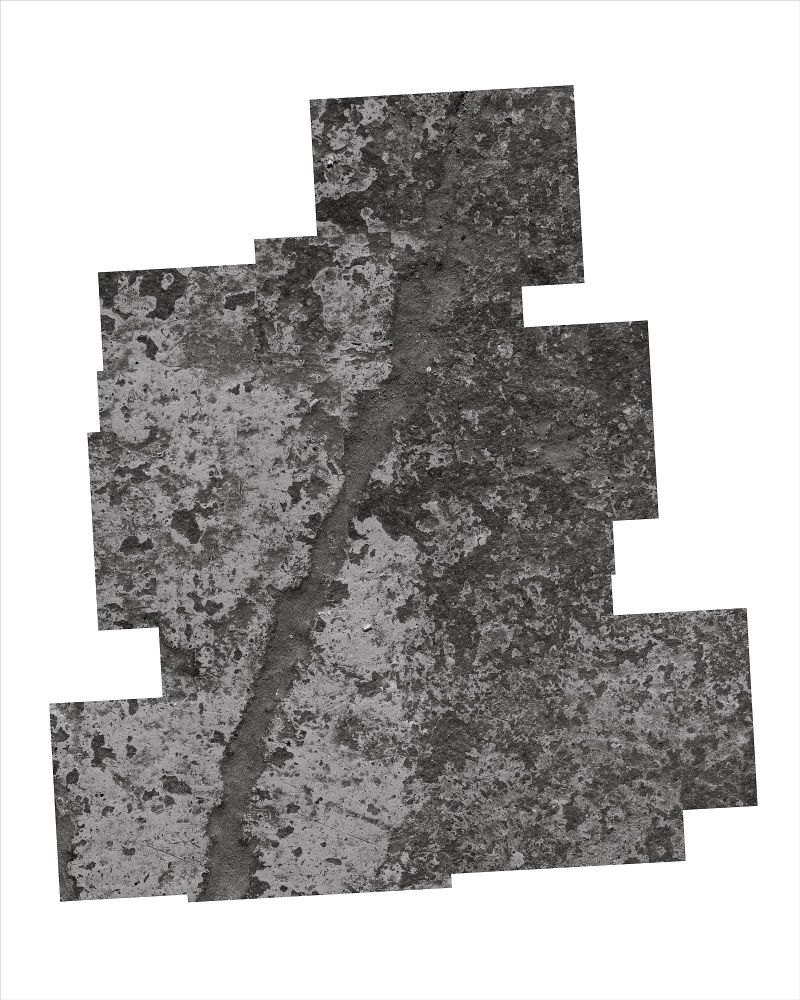
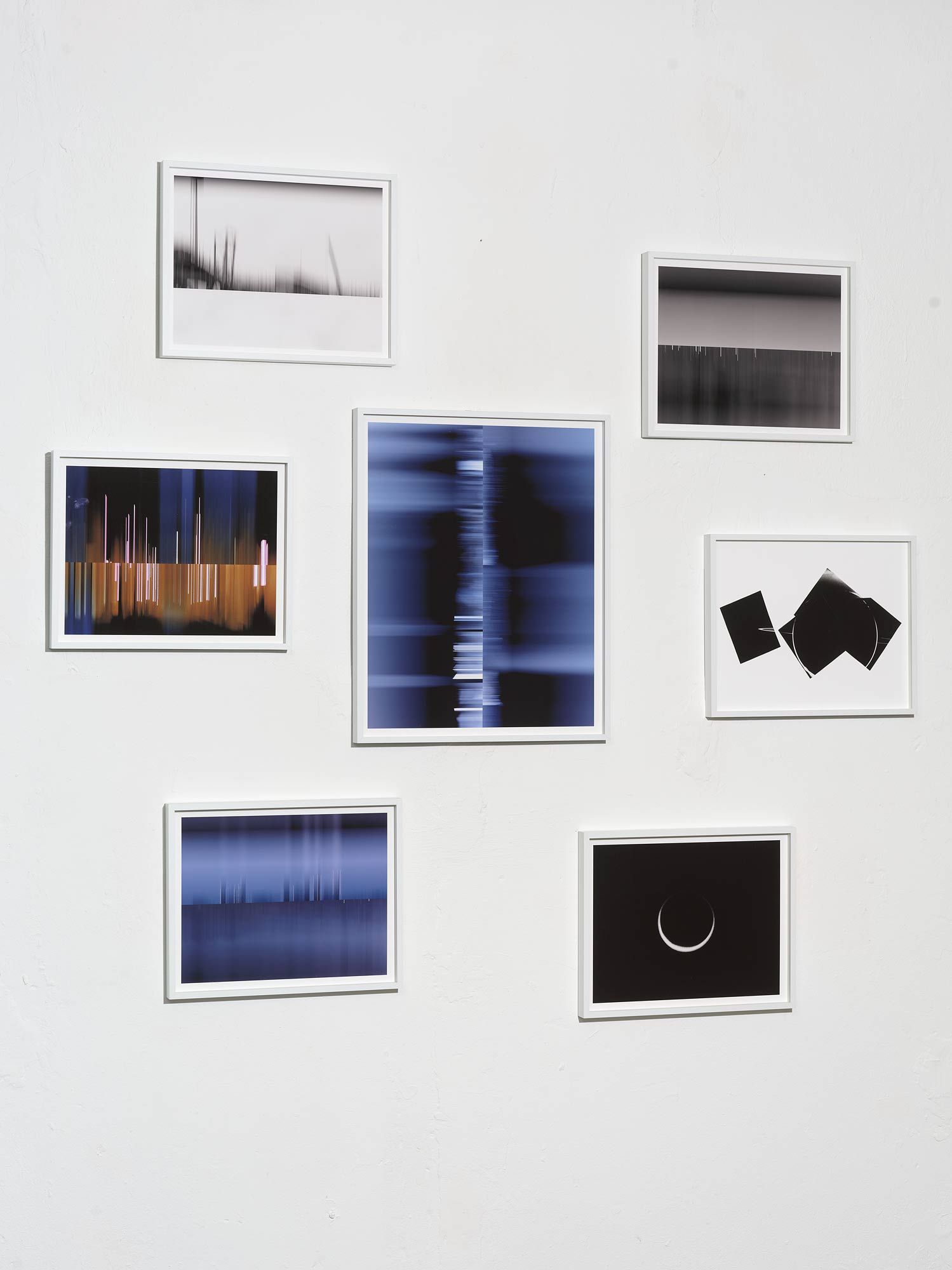
Digital Sensor Artifacts
Glitches in digital backs often arise from synchronization errors between the sensor readout and the shutter mechanism, particularly in complex camera systems. Additional faults can occur during black calibration processes, where incorrect dark frame data is applied. Environmental factors such as static charges, electrical interference, or sudden temperature changes can further destabilize signal integrity — leading to visible artifacts like banding, ghosting, color shifts, or corrupted image segments.
Ironically, these errors tend to appear during the most critical productions, when they are least welcome. Fortunately, instead of discarding them in frustration, I decided to preserve these rare moments of technological misbehavior — and are now happy to share them.
Synchronization Error
28 x 35 cm
Canson Baryta Photographique Matt
Halbe Distanzrahmen mit Museumsglas, weiss
Edition of 5 + 2 AP
Synchronization Error
28 x 35 cm
Canson Baryta Photographique Matt
Halbe Distanzrahmen mit Museumsglas, weiss
Edition of 5 + 2 AP
Synchronization Error
28 x 35 cm
Canson Baryta Photographique Matt
Halbe Distanzrahmen mit Museumsglas, weiss
Edition of 5 + 2 AP
Synchronization Error
28 x 35 cm
Canson Baryta Photographique Matt
Halbe Distanzrahmen mit Museumsglas, weiss
Edition of 5 + 2 AP
Synchronization Error
28 x 35 cm
Canson Baryta Photographique Matt
Halbe Distanzrahmen mit Museumsglas, weiss
Edition of 5 + 2 AP
Synchronization Error
40 x 50 cm
Canson Baryta Photographique Matt
Halbe Distanzrahmen mit Museumsglas, weiss
Edition of 5 + 2 AP

